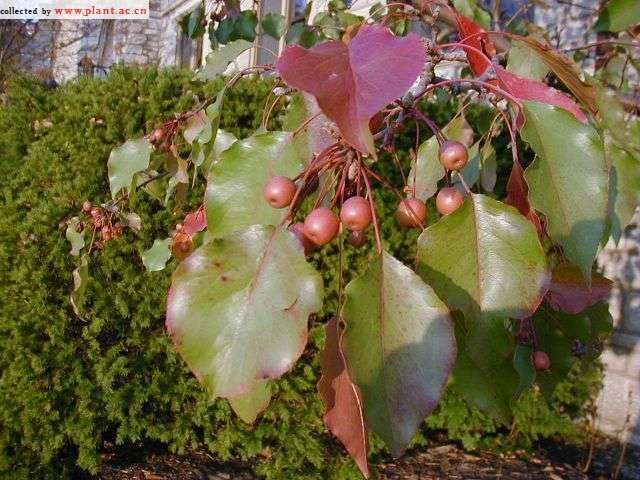Pyrus calleryana AristocratCallery pear
科:蔷薇科
Family:Rosaceae
属:梨属
common name:Callery pear
introduce:Plant Type: Tree
Family: Rosaceae
Missouri Native: No
Native Range: None
Height: 25 to 35 feet
Spread: 20 to 25 feet
Bloom Time: April
Bloom Color: White
Sun: Full sun (only)
Water: Dry to medium moisture
Maintenance: Low
General Culture:
Best grown in humusy, well-drained loams with consistent moisture in full sun. Tolerates some drought once established. Adaptable to a wide range of soil conditions including heavy clays. Generally tolerant of urban conditions. Early spring flowers may be damaged by frost. Prune as needed in late winter to early spring.
Noteworthy Characteristics:
Callery pear is native to China and Taiwan. It is an upright-branched ornamental tree. It grows pyramidal to columnar in youth, but tends to become oval to spreading with age. It is noted for its early profuse spring bloom, quality glossy green foliage and often excellent fall color. Shoots on species plants are thorny, but some cultivars are thornless. It produces small, inedible, greenish-yellow fruits (to 1/2?diameter) which are of little practical value or ornamental interest. The specific epithet and common name honor Joseph Callery, a French missionary, who discovered and collected this plant in China in 1858. In 1917, seed was brought to the U.S. from China for hybridization experiments aimed at improving fireblight resistance for the common fruiting pear (P. communis). The experiments generally proved unsuccessful. In the 1950s, callery pear emerged in U. S. commerce as a promising new ornamental tree, leading to massive landscape plantings. By the 1980s, concerns about both overplanting and structural weakness (limb breakage from wind, ice and snow) began to surface. Today, additional concerns about invasiveness (non-sterile forms are escaping cultivation and naturalizing in some areas) are being addressed. 慉ristocrat?is a thornless, oval-pyramidal, ornamental pear that typically grows to 25-35?tall and to 20-25?wide. It has more horizontal branching than on many other callery cultivars. Narrow-oval, glossy dark green leaves (to 3?long) have distinctively wavy margins Leaves dance in the breeze due to long petioles. Leaves turn attractive reddish-purple to bronze-red in fall. Five-petaled, creamy white flowers (each to 3/4?wide) in dense corymbs appear in profusion in early spring.
Problems:
慉ristocrat?is an attractive ornamental flowering tree for the landscape. It is susceptible to limb breakage or splitting from strong winds, snow or ice, but has better structural strength that some other callery cultivars such as P. calleryana 態radford? It is also susceptible to fireblight.
Uses:
Symmetrically attractive narrow shape makes this cultivar a good selection for a variety of sites. Group or specimen. Small shade tree. May be used as a street tree.
